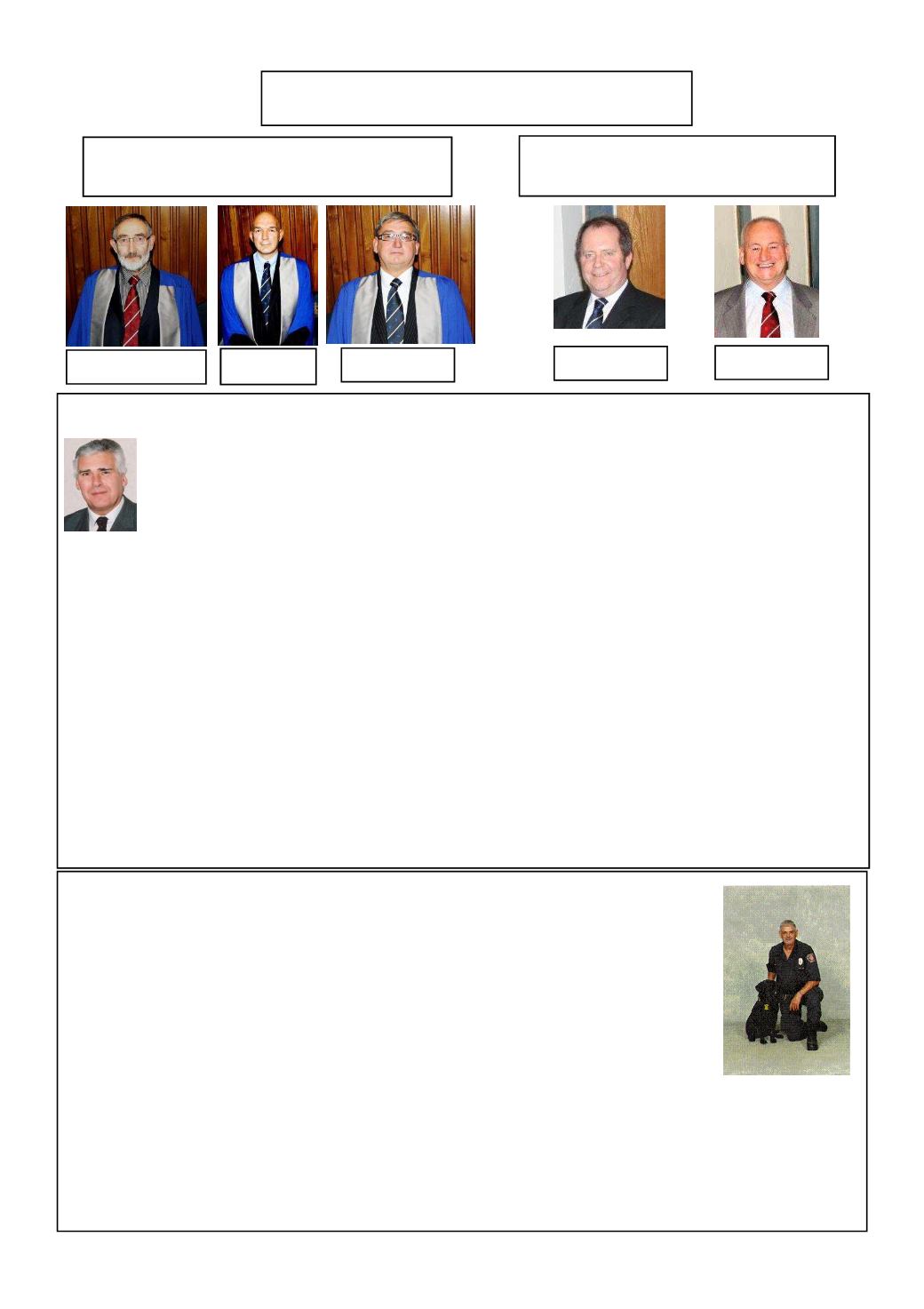

Members Forum
Bernard Laluvein
Leslie Dodd
Les Parris
We welcome our new Liverymen
Clothed at the November 27th Court
We welcome our new Freemen
Admitted at the 27th November Court
Ken Day
Peter Mansi
A welcome volunteer to your PR & Marketing team is
Howard Myers
(Editor–that’s Howard pictured on the right with his working partner, Kylie!)
After 20 years living and working in the United States Howard Myers has returned home to Canterbury
with Kylie, a six-year old black Labrador who has been trained to detect accelerants and hydrocarbons
(petrol and many by-products) that may have been used to start a fire.
Kylie is capable of detecting twenty-one different gasoline products such as diesel, kerosene/paraffin,
brake fluid, acetone, isopropyl alcohol and many more. During her continuation training she is quite ca-
pable of “sniffing out” domestic terrorist explosives, fireworks and firearms.
Howard spent twenty-two years in the fire service in England starting with the Kent Fire Brigade before
a transfer to London. He relocated to the USA in early 1990 and worked his way to become the Fire Marshal for the City of Port
Orange Fire Rescue. He was recruited by a national private fire investigation company and moved to Dallas, Texas. Promotion
quickly followed and Howard travelled extensively relocating to Atlanta, Indianapolis (Indiana), Las Vegas (Nevada) and fi-
nally back to Orlando (Florida) area in November of 2007.
In September 2009 Howard became Freeman of the Worshipful Company of Fire Fighters and we are delighted to welcome him
(and Kylie) to our PR team.
Steve Neville looks at the Origins of the Livery Companies
Livery companies as we know them today probably evolved from the Guilds or Mysteries that flourished
throughout Britain and Europe for many centuries. The earliest reliable historical record in England is
probably the Royal Charter granted to the Weavers' Company in 1155 but many historians believe that
Guilds were flourishing prior to 1066.
These early Guilds - derived from the Saxon word "gildan", meaning "to pay" - controlled the manufacturing and
selling of goods and food amongst their members in major Cities throughout Europe.
Trade and domestic disputes were settled by arbitration at designated Halls, which also served as a meeting place for
traders. Fines and penalties were imposed for selling bad food or shoddy materials and regulations introduced to
limit competition and to keep standards high. Continued examples of poor quality products would result in expulsion
from the Guild along with the loss of livelihood and reputation.
The word “Livery” was derived from medieval times and was originally the term used for the clothing, food and
drink provided by the Bishops, Barons and great landowners of those days. It was later adapted to describe the dis-
tinctive clothing and badges individual Guilds or Companies chose to wear as outward symbols of their privilege
and trade protection. Hence the title
Livery Company
and the custom that prevails to this day of the Master and Offi-
cers wearing distinctive robes on official occasions. As they became more wealthy and influential, Guilds and Com-
panies established links with a specific church or monastery, where regular services would be held for sick and de-
parted members. They also adopted their own Patron Saints - the Patron Saint of the Firefighters being St. Florian.
In future issues, Steve will examine the current and future roles of the Livery Companies
















